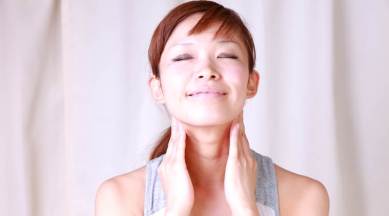Self massage is a natural form of remedy instinctive to us from an early age. How often have you rubbed a place you bang or a muscle that aches without thinking about it?
Getting a therapeutic massage from a professional can be an incredibly satisfying experience. But you can get many benefits of the treatment at home by learning how to self massage and with the use of massage therapy balls. Self massage is a good system to maintain your body’s suppleness and functionality, or alongside a remedial programme as recommended by a physio, osteo or sports therapist.
What are the main benefits of massage?
The main benefit of massage is its help stimulating blood flow to sore muscles, however tiny. Increasing the circulation of blood to the area helps your body to deliver more oxygen and nutrients, whilst removal of CO2 and other waste products occurs.
Massaging acts like squeezing a sponge to get rid of waste and uptake oxygen and nutrients to aid the tissue recovery.
Some studies have shown massage can have an effect on the soft tissue and the nervous system too, breaking down bonds formed in the fascial layers which occur naturally from being sedentary for long periods of time. Fascia is the thin connective tissue that surrounds and interconnects everything in the body; organs, major muscles etc.
These combined effects mean that you are likely to experience improved range of motion and flexibility in the short term. So self massage is a good option for pole dancers ahead of a performance requiring flexibility based skills.
Even soft light brushing or stroking up the limbs and body can have a beneficial effect on your lymphatic system, which runs from movement of the body. This can also impact on the superficial fascia, loosening it up.
Stimulating the body through touch also improves proprioception in that area…where is that left knee when you are inverted on the pole? It sometimes takes a touch from the teacher to make the connection in your brain.
It can also release tension in contracted muscles (cramping), lower cortisol (the stress hormone), improve serotonin levels, helping you feel better all round and get a better night’s sleep.
Sounds great, how do I get started with self massage?
You could buy a number of massage tools on-line but you have most of the tools you need in your own body; fingers, fist, elbows and forearms. Technique will vary depending on the area; start with light pressure and go with what feels good. Where you can try not to use your extended fingers and thumbs too much or you can damage them. Knuckles of a fist or the palm of your hand is good to use on the forearm (of the opposite arm obviously) and even your own forearm along the quads or other forearm.
There are obviously a few areas you can’t reach easily or are tough to get into, but you can find tools at home for these without expensive equipment. I use a lemon squeezer (the sort you find in a bar, not the spiky ones) to get into tricky parts of my back. I’ll roll a rolling pin/muddler to help get enough pressure into my quads.
How about foam rollers?
If you have a foam roller easily accessible to you – great. They can be helpful for many parts of the body. I like to use them on my hamstrings and back. However, they can be tricky to get into specific smaller muscles effectively without rolling over bone, and there are some areas you need to be careful with: for example, I would definitely err on the side of caution with the ITB (a thick band of connective tissue that runs from the outside of your hip to the outside of the knee). I often see people punishing themselves on the foam roller here rather than looking into the cause. Tension may be coming from one of two muscles, the glute max or tensor fascia lata.
If it’s painful, stop!
If it is general tension from working out and doesn’t hurt to use your chosen tool, then use it. I wouldn’t recommend foam rolling or self massage onto an injured area without consultation.
These are suggestions not medical advice. When it feels good, it probably is. If it’s painful, stop! If in doubt, miss it out and seek medical advice.











